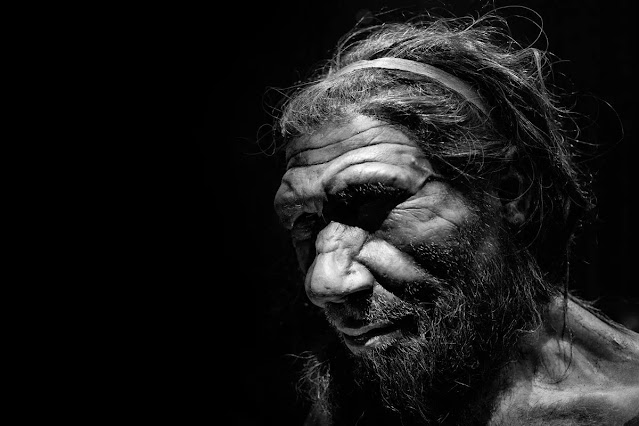
A new study suggests that few of our ancestors survived, and the population collapse was likely due to climate causes
900,000 years ago, the human race was on the verge of extinction, new research claims. The genetic evidence analyzed suggests that there are only 1,280 of our ancestors left on this planet.
The research analyzed the genetic ancestry of 3,154 modern humans to track their characteristics in time and the population patterns their current genomes likely created.
Professor Wangji Hu, of the Chinese Academy of Sciences, and his colleagues argue that between 813,000 and 930,000 years ago, the groups of ancient humans that eventually gave rise to our species, Homo sapiens, experienced what geneticists call “crowding.” .
For unknown reasons – perhaps extreme environmental conditions – their numbers have dwindled so dramatically that they are one breath away from complete extinction. Based on the study’s estimates, about 98.7% of our ancestors are extinct.
“The estimated population size of our lineage is very small, and the bottleneck persisted for a remarkably long time, if calculated accurately,” says paleontologist Chris Stringer of the Natural History Museum in London, who was not involved in the study. “If this bottleneck had actually occurred, it would certainly have put our ancestors very close to extinction,” he says.
New type
Geneticists suggest that this “crowding” may have led to widespread inbreeding with a subsequent loss of human genetic diversity that has been preserved to this day. They also believe that the bottleneck may have created a remarkable new species of hominin. The timing of the bottleneck fits with some existing genetic estimates that link the same time period to the emergence of a new species that may have been the last common ancestor of the three brain-evolving species of the late Pleistocene: Neanderthals, Denisovans, and Homo sapiens.
The study raises some interesting questions about human evolution during a time period when genetic and fossil records are relatively scarce, says University of Wisconsin-Madison population geneticist Aaron Ragsdale, who was not involved in the research. “I look forward to seeing whether their results can be replicated using other methods,” Ragsdale says.
Population fluctuations, even hundreds of thousands of years ago, leave detectable imprints in the genetic sequence of modern humans. To analyze it, a team of researchers led by Chinese geneticists developed a new tool called FitCoal. The researchers used the tool on more than 3,000 people from 10 African populations and 40 from outside Africa. FitCoal’s calculations tracked the population’s many genetic mutations and the probabilities of their occurrence in time to arrive at estimates of the size of the population that existed at different stages in evolutionary history.
“Our findings show that this severe bottleneck brought hominid ancestors to the brink of extinction and completely reshaped existing human genetic diversity,” the researchers wrote in the study.
Ragsdale has his doubts about whether the situation is that serious. “I think it’s an exaggeration to conclude from these results that human ancestors were on the verge of extinction,” he says. He points out that actual population sizes are often much larger than those estimated by methods such as FitCoal. He adds that the suggestion of having such a small population over many generations may be distorted by much shorter periods of decline in numbers.
What led to the massive population decline?
What could cause this population decline? Genetic evidence does not provide answers, but scientists do know that at the time there were significant environmental differences.
The mid-Pleistocene was a period of significant climate change – including a sharp worldwide cooling around 900,000 years ago that brought glaciers, colder seas, widespread droughts and stronger monsoons. Wildlife species in Africa and Eurasia experienced significant changes during this period.
Much research has shown how climate and environmental change have also contributed to significant changes in human evolution. But this epoch does not appear to have caused a global population collapse among the various human species on the planet who were not our direct ancestors.
Nick Aston, a Paleolithic archaeologist at the British Museum who was not involved in the study, notes that many archaeological sites in Africa and Eurasia date back to the proposed bottleneck period. This indicates that any population crash affected only a limited group, possibly in Africa, that may have been the ancestors of modern humans. “A search for possible causes of congestion will be fruitful, whether it be regional drought, volcanic activity or other environmental factors,” he says.
Surprisingly, the study indicates that our ancestors managed to survive in dangerously small numbers for a very long time, about 120,000 years. But when conditions became favorable again for human habitation, either through beneficial climate changes or, the authors argue, technological advances such as human control of fire, our ancestors grew rapidly. From about 813,000 years ago, all 10 African populations studied appear to have increased by a factor of 20.
More research is needed
Once the FitCoal method is available, more testing should be done on its accuracy. Scientists can use it to study populations from other genomes such as Neanderthals and Denisovans, says Chris Stringer, a professor at the American Museum of Natural History.
The study authors suggest that this long period during which our ancestors lived in such small numbers may have led to the evolution of an entirely new species that may be the last common ancestor of modern humans and our Neanderthal and Denisovan relatives. Ashton says this idea fits with some genetic evidence indicating that the common ancestor of these species lived at least 500,000 to 700,000 years ago. “But there are other possible explanations,” he points out.
For example, paleontological studies that track morphological changes such as the shape of the skull and teeth have indicated that the lineages did diverge before the bottleneck, meaning that Neanderthals and Denisovans escaped its tracks.
The estimated bottleneck period is too old to detect any ancient DNA, at least with current methods. The oldest human DNA ever found is only 400,000 years old. And in Africa, the cradle of humanity, the climate makes preserving ancient DNA particularly difficult.
Evidence such as stone tools and bones are also difficult to find. Further examination of skulls and bones found at various sites in eastern and southern Africa, China, Indonesia and Spain could help scientists determine whether the evolutionary changes seen in our bones match those suggested by genetic models. “The genetic theory must be rigorously tested against the archaeological and human fossil record. This is best achieved through the most accurate dating of existing and new excavated sites likely to give rise to the proposed bottleneck,” says Ashton.

“Total alcohol fanatic. Coffee junkie. Amateur twitter evangelist. Wannabe zombie enthusiast.”





More Stories
“Manor Lords”: what is the new game – the phenomenon that sold a million copies in one day
See through the eyes of 7.3 million volunteers – an app that changed their lives
The app enables ad blocking in Windows 11 – Windows